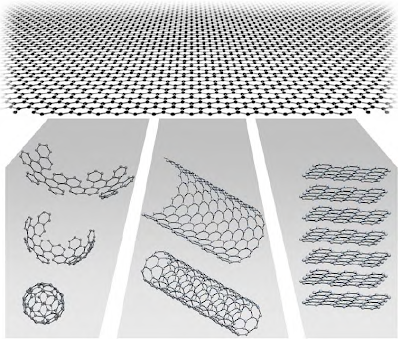announced today that the Nobel Prize in Physics 2010 was awarded to Andre Geim and Novoselov Konstantin University of Manchester for the manufacture of graphene. In the 90 the two managed to peel graphite, the material used as a quarry in pencils, sliced \u200b\u200bso thin that eventually reduced to a single layer of atoms, graphene. Both, graphite and graphene, are pure forms of carbon and only this element is necessary for their synthesis. It is the finest material ever produced and has physical and chemical characteristics very special. For example, although not a metal, is a good electronic conductor. It is also clear because of its small thickness. It really is a unique material that will have a huge impact on technological development.

graphene model, every gray ball represents a carbon atom. Each atom is connected by a chemical bond with three atoms neighborhood, and they form a hexagonal network.
is the second Nobel Prize to be awarded for results related to the pure carbon. In 1996, the Nobel Prize for chemistry was awarded to Robert Curl, Harold Kroto and Richard Smalley for the discovery of the molecule C 60 . It is known as the Buckminsterfulereno and consists of a molecule shaped like a soccer ball made up of 60 carbon atoms.
Since there is currently much interest in investigating this type of carbon-based materials, I will write some articles about it here. In four parts, try to explain each of the states in which carbon can be found:
0. Buckminsterfulereno
1.
carbon nanotubes 2. Graphene
3. graphite and diamond
I'm still not entirely sure what order I'm going to write but just start from the No. 2 because it is the most current. So if interested, I invite you to return regularly to read new articles.

Here is a picture that represents the relationship between the buckminsterfulerenos graphene, carbon nanotubes and graphite. Graphene pieces can be curved to mold fullerenes, roll up to create nanotubes or stacked to form graphite. The image is in the publication The Rise of Graphene to Geim and Novoselov , which is freely accessible here.
0 comments:
Post a Comment